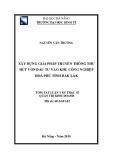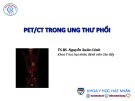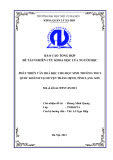
BioMed Central
Page 1 of 5
(page number not for citation purposes)
Journal of Medical Case Reports
Open Access
Case report
Primary glioblastoma in the pineal region: a case report and review
of the literature
Kyung-Sub Moon1, Shin Jung*1, Tae-Young Jung1, In-Young Kim1, Min-
Cheol Lee2 and Kyung-Hwa Lee3
Address: 1Department of Neurosurgery, Chonnam National University Research Institute of Medical Sciences, Chonnam National University
Hwasun Hospital & Medical School, Gwangju, Republic of Korea, 2Department of Pathology, Chonnam National University Medical School,
Gwangju, Republic of Korea and 3Department of Pathology, Seonam University, College of Medicine, Namwon, Republic of Korea
Email: Kyung-Sub Moon - moonks@chonnam.ac.kr; Shin Jung* - sjung@chonnam.ac.kr; Tae-Young Jung - tongbori@hanmail.net; In-
Young Kim - kiy87@hanmail.net; Min-Cheol Lee - mclee@chonnam.ac.kr; Kyung-Hwa Lee - azimmed@hanmail.net
* Corresponding author
Abstract
Introduction: Glioblastoma in the pineal region is extremely rare with only a few cases reported
in the literature.
Case presentation: A 68-year-old man presented with a sudden deterioration manifesting as a
headache, vomiting and gait disturbance. A magnetic resonance imaging study revealed a
heterogeneously ring-enhanced mass in the pineal region. The mass was subtotally removed
through the occipital transtentorial approach, and diagnosed as a glioblastoma.
Conclusion: We discuss the clinical course, radiological findings and treatment strategies of pineal
glioblastoma with a review of the relevant literature.
Introduction
The pineal region consists of the pineal body, the poste-
rior wall of the third ventricle, tela choroidea and velum
interpositum. Despite its small size, a wide variety of brain
tumors can arise in the pineal region. Tumors of the pin-
eal body may be of pineal parenchymal origin, of extrago-
nadal germ cell origin, or of neuroglial origin [1].
Approximately 11–28% and 50–75% of tumors in the
pineal region are pineal parenchymal tumors and germ
cell tumors, respectively [1]. In addition, glioma, menin-
gioma and mesenchymal tumors are encountered occa-
sionally. Glioblastoma, which is the most malignant and
frequent glioma in brain tumors, is extremely rare in the
pineal region with only 17 cases being reported in the lit-
erature [2-13]. This paper presents a case of glioblastoma
arising in the pineal region and discusses its clinical
course, radiological findings and treatment strategies with
a review of the relevant literature.
Case presentation
A 68-year-old man presented with a sudden deterioration
manifesting as a headache, vomiting and gait disturbance.
Two months earlier, he had begun to notice intermittent
headaches. Neurological testing revealed ataxic gait fea-
tures and bilateral papilledema without other neurologi-
cal deficits. The computed tomography (CT) scan revealed
obstructive hydrocephalus caused by a round hypodense
ill-defined lesion in the pineal region (Fig. 1A). A mag-
netic resonance (MR) imaging study demonstrated a 4 × 3
× 4 cm mass at the pineal gland. Through the administra-
tion of gadolinium, the lesion showed a heterogeneous
hypointensity on the T1-weighted image and hyperinten-
Published: 27 August 2008
Journal of Medical Case Reports 2008, 2:288 doi:10.1186/1752-1947-2-288
Received: 15 January 2008
Accepted: 27 August 2008
This article is available from: http://www.jmedicalcasereports.com/content/2/1/288
© 2008 Moon et al; licensee BioMed Central Ltd.
This is an Open Access article distributed under the terms of the Creative Commons Attribution License (http://creativecommons.org/licenses/by/2.0),
which permits unrestricted use, distribution, and reproduction in any medium, provided the original work is properly cited.






























